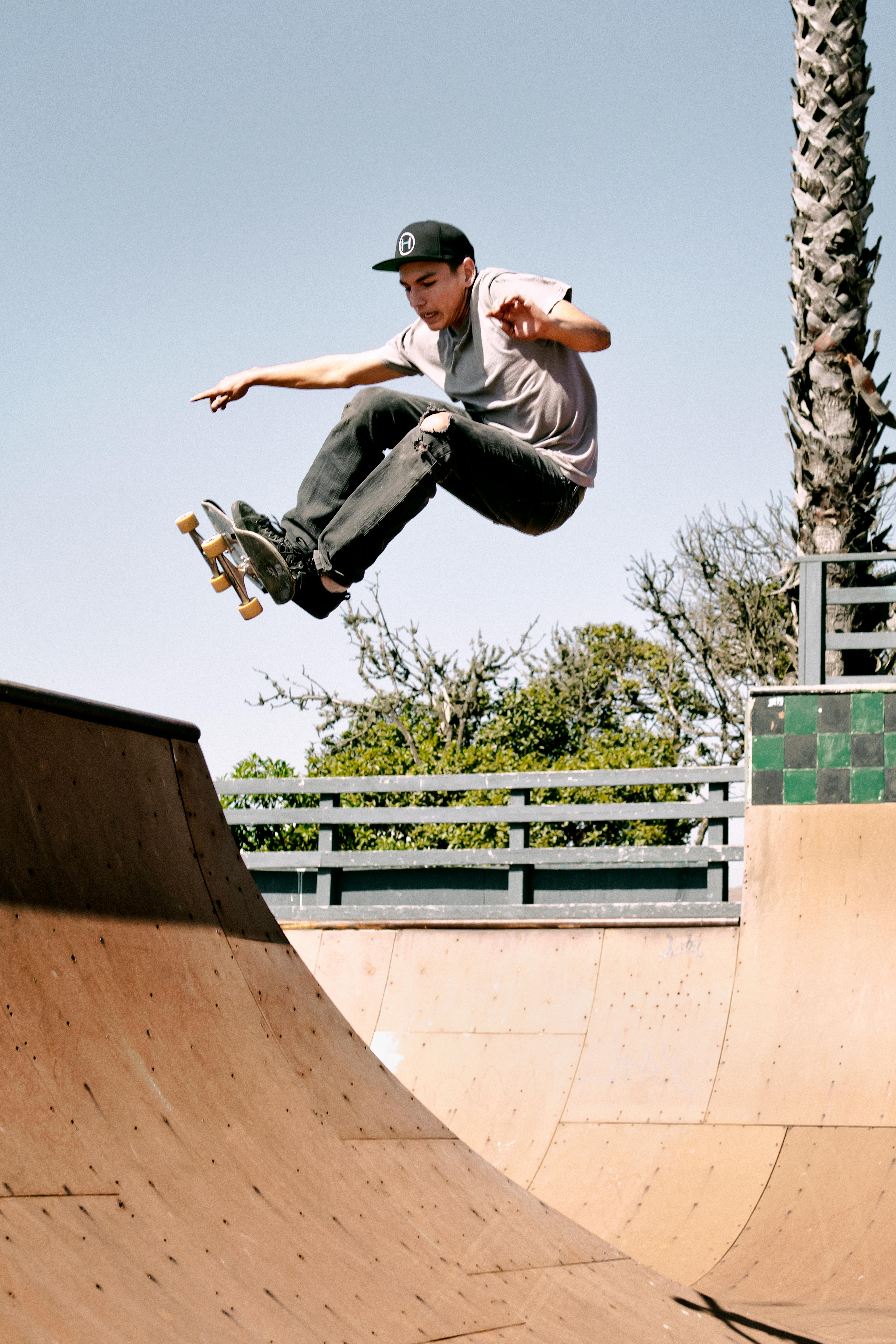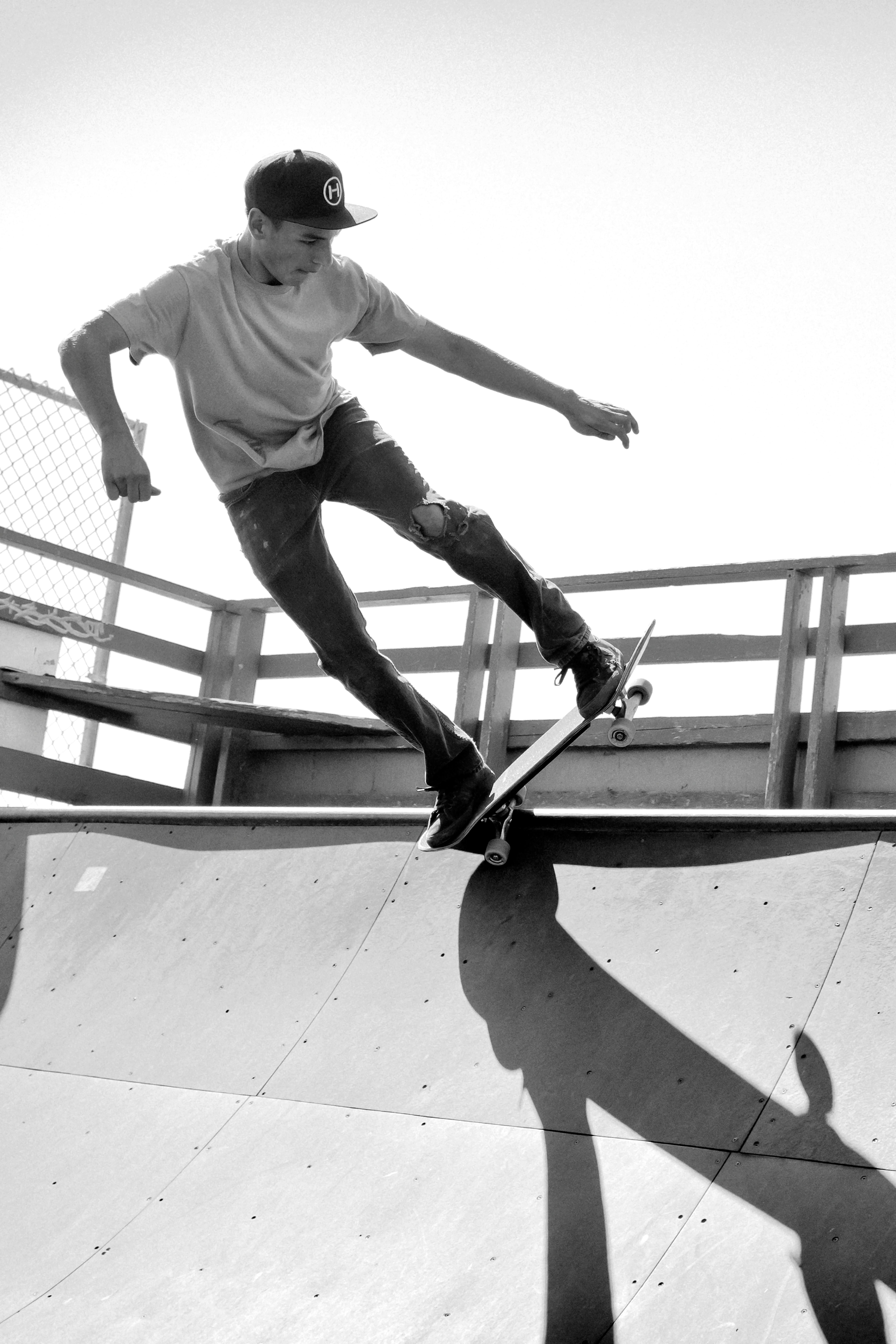If you’re a skateboard enthusiast or someone considering taking up skateboarding, understanding the importance of deck width for stability and control is crucial. The deck width of a skateboard plays a significant role in determining how stable and in control you feel while riding, whether it’s cruising or attempting tricks. By exploring the relationship between deck width and stability, you’ll uncover valuable insights that can enhance your skating experience and help you choose the perfect board for your needs. So, let’s delve into the world of deck width and discover how it impacts your ride!

Understanding the Basics of Deck Width
Defining deck width
Deck width refers to the measurement of the widest part of a skateboard deck. It plays a crucial role in determining the stability, control, and maneuverability of the board. Skaters often have different preferences when it comes to deck width, with options ranging from around 7.5 inches to over 9 inches.
How is deck width measured?
Deck width is measured from one edge to the other, typically at the widest part of the deck. It is important to note that deck width is not the same as the width of the trucks or wheels, which are separate components of the skateboard. The appropriate deck width depends on various factors such as riding style, body size, and skill level.
Deck width and skateboard components
Deck width influences the selection of other skateboard components, such as trucks and wheels. The width of the trucks should align with the deck width to ensure proper stability and control. Similarly, the choice of wheels should complement the deck width for optimal performance. Therefore, understanding the relationship between deck width and other components is essential for a well-balanced skateboard setup.
Importance of Deck Width for Stability
The relationship between deck width and stability
Deck width directly impacts the stability of a skateboard. A wider deck generally provides a larger surface area for the rider to stand on, resulting in increased stability. This is particularly beneficial for beginners or skaters who prioritize stability over maneuverability. On the other hand, narrower decks offer a smaller platform that can be more responsive and allow for quicker turns.
Wider decks and improved stability
For riders looking for enhanced stability, wider decks are the way to go. The increased width provides a solid foundation, making it easier to maintain balance and control. This is especially valuable when cruising or riding at high speeds, as wider decks offer better stability and a smoother ride.
Deck width preferences for different riding styles
The optimal deck width varies depending on the rider’s preferred style of skateboarding. Street skaters often favor narrower decks, typically around 7.5 to 8 inches, as they prioritize maneuverability for executing technical tricks. On the other hand, riders who focus on cruising or downhill riding tend to lean towards wider decks, ranging from 8.5 to 9 inches or more, to ensure stability during fast-paced rides.
Enhancing Control with the Right Deck Width
Balancing control and maneuverability
Control and maneuverability are essential aspects of skateboarding. The right deck width plays a significant role in balancing these two factors. While wider decks offer better stability and control, they may sacrifice some maneuverability. Conversely, narrower decks provide increased maneuverability at the expense of stability. Thus, finding the right balance between control and maneuverability is crucial.
Narrower decks for technical tricks
When it comes to technical tricks and flip tricks, narrower decks are preferred by many skaters. The reduced width allows for quicker and more precise foot movements, enabling skaters to perform intricate maneuvers with greater ease. Additionally, narrower decks can provide a lighter and more responsive feel, aiding in the execution of technical tricks that require precise timing and control.
Wider decks for cruising and downhill riding
If your skateboarding style involves more cruising or downhill riding, wider decks offer numerous benefits. The increased width enhances stability, allowing riders to feel more confident and comfortable when navigating various terrains. Additionally, wider decks distribute the rider’s weight more evenly, providing a smoother ride and reducing fatigue during longer trips.
Considerations for Choosing the Appropriate Deck Width
Skater’s body size and shoe size
When selecting the appropriate deck width, it is important to consider the skater’s body size and shoe size. Generally, taller and larger individuals tend to have larger feet, which may require a wider deck for optimal comfort and stability. Conversely, smaller individuals or those with smaller feet may find narrower decks more suitable.
Deck width and foot placement
Deck width also affects foot placement on the board. A wider deck allows for wider stances, which can be advantageous for stability and control. Conversely, narrower decks require a more narrow stance, offering increased maneuverability for certain types of tricks. Skaters should experiment with different deck widths to find the optimal foot placement that suits their style and preferences.
Determining the optimal deck width
Determining the optimal deck width is often a matter of personal preference and experimentation. Skaters should consider their riding style, body size, and foot size as starting points for selecting an appropriate deck width. Trying out different widths and evaluating the stability, control, and maneuverability they provide will ultimately lead to finding the optimal deck width for an individual’s needs.

Deck Width and Skill Level
Beginner-friendly deck widths
For beginners, wider deck widths generally offer better stability and control, which can be beneficial when learning the foundational skills of skateboarding. Starting with a deck width around 8 inches can provide a stable platform for learning basic tricks and developing balance and control. As beginners progress and become more comfortable on the board, they can experiment with different widths to find their preferred setup.
Intermediate and advanced skaters’ preferences
Intermediate and advanced skaters often have more specific preferences when it comes to deck width. These skaters have honed their skills and typically have a preferred riding style. For street skaters focused on technical tricks, narrower decks ranging from 7.5 to 8.25 inches are commonly favored. Riders specializing in cruising or downhill riding may opt for wider decks, ranging from 8.5 to 9 inches or more.
Deck width adjustments as skill level evolves
As a skater’s skill level evolves, their preferences for deck width may change. Advanced skaters might find themselves gravitating towards narrower decks to accommodate their refined technical abilities and the need for increased maneuverability. However, it is essential to remember that individual preferences vary, and some skaters may continue to prefer wider decks even at advanced skill levels.
Understanding Deck Width and Wheelbase
Deck width and wheelbase relationship
The wheelbase refers to the distance between the inner mounting holes of the skateboard trucks. While deck width and wheelbase are separate measurements, they are closely related. A wider deck generally requires a longer wheelbase to maintain proper alignment and performance. Conversely, a narrow deck typically pairs well with a shorter wheelbase for optimal maneuverability.
Wheelbite risks with wider deck widths
Wheelbite occurs when the wheels come into contact with the deck during sharp turns or tricks, resulting in a loss of control. This is more common with wider deck widths, especially if the trucks and wheels are not adequately adjusted or if the rider uses loose trucks. Skaters can minimize the risk of wheelbite by ensuring proper truck adjustments and selecting suitable wheel sizes and hardness.
Complementing deck width with suitable wheelbase
To maximize the potential of a skateboard setup, it is crucial to complement the deck width with a suitable wheelbase. While wider decks generally benefit from longer wheelbases, it is important to find a balance that suits the rider’s preferences and style. Experimenting with different wheelbase lengths can help skaters fine-tune their setups for optimal stability, control, and maneuverability.

Deck Width and Terrain Considerations
Deck width for street skateboarding
In street skateboarding, where technical tricks and maneuverability are paramount, narrower deck widths are commonly preferred. A deck width ranging from 7.5 to 8.25 inches is often favored by street skaters as it allows for precise foot placement and quick board flips. The narrower width offers the agility needed to navigate obstacles, ledges, and stairs commonly found in urban environments.
Choosing the right deck width for skate parks
Skate parks provide a mix of features and terrain, catering to various riding styles. When it comes to skate park riding, the choice of deck width depends on personal preferences and the type of tricks skaters wish to perform. However, many skaters find that a deck width between 8 to 8.5 inches strikes a balance between maneuverability and stability, allowing for versatility across different park obstacles.
Deck width preferences for vert skating
Vert skating, characterized by riding ramps, halfpipes, and bowls, demands stability and control during high-speed maneuvers and aerial tricks. Wider deck widths, typically ranging from 8.5 to 9 inches or more, are commonly favored by vert skaters. The greater width provides stability during powerful transitions and landings while offering a solid platform for executing complex aerial maneuvers.
Proper Deck Width and Truck Selection
Matching deck width and truck axle
To ensure optimal performance, it is crucial to match the deck width with the appropriate truck axle length. The axle length should be roughly the same as the deck width, allowing the wheels to align properly and ensuring a well-balanced setup. Using trucks with axles either too narrow or too wide for the deck can compromise stability, control, and overall ride quality.
Impact of deck width on truck performance
Deck width directly affects the performance of skateboard trucks. Wider decks generally pair well with wider trucks, providing increased stability and preventing the board from feeling sluggish or unresponsive. Conversely, narrower decks benefit from narrower trucks, as they offer enhanced maneuverability and responsiveness for executing technical tricks. The compatibility between deck width and truck selection is crucial for achieving optimal ride characteristics.
Finding the right balance
When selecting trucks, it is essential to strike a balance between deck width, truck width, and personal preferences. The combination should provide stability and control while allowing for the desired level of maneuverability. Skaters should experiment by trying different truck and deck width combinations to find the optimal setup that caters to their specific riding style and needs.

Deck Width and Personal Riding Style
Deck width and stability for cruising
Deck width significantly impacts stability while cruising. Wider decks offer a broader base to distribute weight, resulting in enhanced stability for cruising long distances. Additionally, wider decks provide a comfortable platform for riders who prefer a relaxed cruising style. These decks offer a smooth and enjoyable experience, allowing riders to glide effortlessly over various terrains.
Technical tricks and deck width preferences
When it comes to technical tricks such as flips, grinds, and slides, deck width preferences often tend to be narrower. The reduced width enables better control and maneuverability, allowing skaters to execute complex tricks with precision. The narrower deck width facilitates quick foot adjustments, crucial for overcoming mid-trick obstacles and maintaining balance during intricate maneuvers.
Freestyle and freeride considerations
Freestyle and freeride skateboarding styles encompass a range of tricks and maneuvers, often requiring a mix of stability, control, and maneuverability. Deck width preferences vary among freestyle and freeride skaters, with some leaning towards narrower decks for technical aspects while others opt for wider decks for added stability during slides and spins. Ultimately, it comes down to personal preferences and finding a deck width that complements the desired tricks and riding style.
Experimenting with Deck Widths
Trying different deck widths
Skaters are encouraged to experiment with different deck widths to understand the impact on stability, control, and maneuverability. Trying out decks of varying widths, ranging from narrower options around 7.5 inches to wider options up to 9 inches, allows skaters to feel the differences firsthand and assess which width suits their riding preferences best.
Assessing the impact on stability and control
Through experimentation, skaters can evaluate how different deck widths influence their stability and control on the board. Wider decks often provide a more stable ride, allowing for confident transitions and better balance. Narrower decks, while sacrificing some stability, offer increased control and maneuverability. By assessing the impact of deck width on these factors, skaters can make informed decisions about their preferred setup.
Finding the perfect deck width
Finding the perfect deck width is an ongoing process that varies for every individual. As skaters gain experience and develop their skills, their preferences may shift, leading to changes in deck width. The key is to keep trying different deck widths, considering personal riding style, terrain preferences, and individual comfort. By experimenting and paying attention to the feedback their bodies provide, skaters can ultimately find the perfect deck width that maximizes stability, control, and enjoyment on their skateboarding journey.

